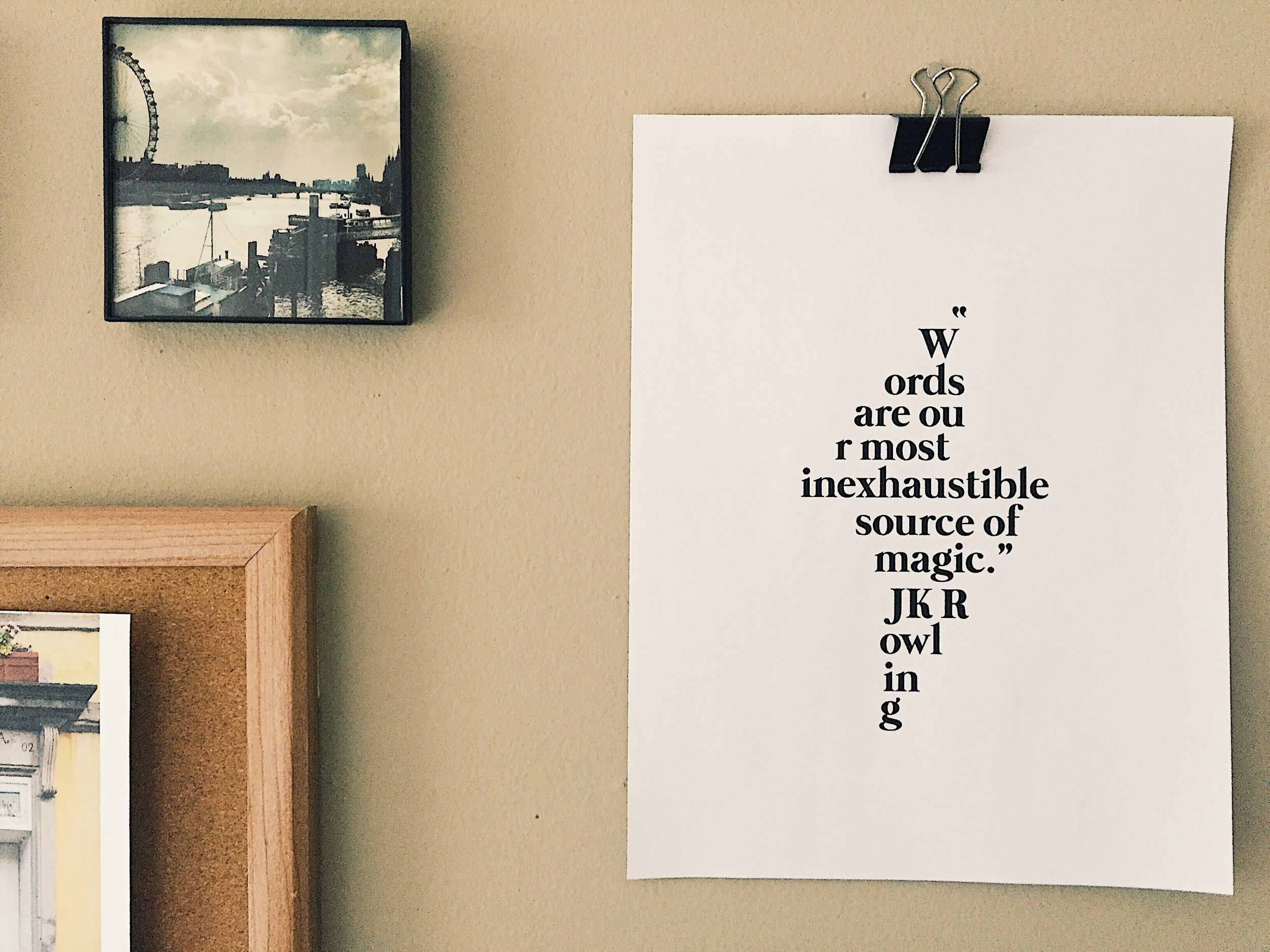A Big Kid's Guide to Credit Cards
When I speak with my friends about credit cards, many have no idea where to begin; some are even fearful that simply opening a credit card means guaranteed life-long debt. Now that so many of us new grads have big-kid jobs that bring in a regular income, it’s time to learn how to responsibly manage a credit card, and I just so happen to love talking all things credit cards and budgeting (probably because it’s the only outlet where it’s socially acceptable for me to exercise my incessant need to control everything). Not only can credit cards offer perks like free things, but they are also useful in building a solid credit score for when you’d like to do things down the adulthood road like buy a house or somethin’.
Admittedly, owning a credit card without driving yourself into an unmanageable debt will require self-control. But we are big kids now; if we haven’t learned to somewhat control ourselves at this point, we need to take some time for quiet self-reflection that concludes with the personal resolve to grow up already.
The following is some basic credit card information (and by no means a complete guide) to get you started down the path of building credit and earning free stuff.
1. Choose the right card.
Much like choosing a spouse or job or ice cream flavor, there are several things to consider when choosing the right credit card for you.
REWARDS. There’s an ideal credit card out there for everyone: some offer travel rewards, like miles or travel credits; others offer cashback or giftcards. Since I travel frequently, I’ve chosen to go with three credit cards that offer travel rewards:
- Barclaycard Arrival World Mastercard (This card is not available anymore; instead it has been replaced with the Barclaycard Arrival Plus World Elite Mastercard)
- Citi / AAdvantage Platinum Select Mastercard
- Chase Sapphire Preferred
When I use these cards, I receive either one or two points/miles per dollar I spend on the card. Thanks to the rewards of my AAdvantage card, I was able to book a roundtrip ticket to London this summer for only $170 in fees. Research the various rewards cards offer to determine which would best benefit your lifestyle. Avoid cards that offer no rewards, because that’s just lame and receiving free things is better than not receiving free things. [Psstt... this post explains why you need a travel credit card if you are a travel-lovin' fool like me.]
SIGN-UP BONUSES. Look for a credit card that offers a sign-up bonus. For instance, my Barclaycard offered 20,000 bonus miles once I spent $1,000 in the first three months after opening my account. That’s a $200 credit that I could put toward any travel purchase, whether a plane ticket, car rental or hotel. I don’t think it’s worth it to sign up for a card that doesn’t offer some sort of bonus like this. The key to reaching the spending amount required to meet the bonus is to put your normal expenses on the card: rent, groceries, bills you pay online. Do not ball out and spend erroneously just to meet the sign-up bonus amount; incurring debt to receive free things kind of (definitely) defeats the purpose.
ANNUAL FEE. Some credit cards charge an annual fee. These usually are in the the $95 - $100 range, some less, some more. It’s up to you to decide if the benefits of the card outweigh a yearly fee. Some cards offer to waive the annual fee for the first 12 months as a sort of trial run for the customer. My AAdvantage card waives the $95 annual fee for the first year. As my one-year mark draws near, I’ll have to assess whether the benefits - American Airlines miles for every dollar spent - are worth it for me to pay that $95; otherwise, I can always cancel the card before the annual fee goes into effect. (Update: The one-year mark did roll around, and I did decide to keep the card, annual fee 'n all.)
INTEREST RATES. If you pay off your credit card in full every month (which as an early 20-something with very few expenses, you should!), you won’t have to worry at all about interest rates. From what I’ve seen, interest rates vary from as low as 8.25% to more than 25%, most depending on your credit score. But since this post is aimed toward discussing using a credit card without going into debt, I’m not going into further detail on interest rates. You can read this instead.
Note: Some cards offer a 0% APR (aka interest) intro rate for the first 12 months, which then goes up considerably thereafter. Do not be wooed into a false sense of security with these and develop bad habits of spending more than you can pay off. That unresolved credit balance will quickly add up and easily land you into a debt bind once that interest rate kicks in.
INTERNATIONAL TRANSACTION FEES. If you like to travel abroad frequently, it’s always beneficial to go with a card that doesn’t charge a transaction fee for international usage, as those fees can add up quickly. Most travel cards offer this benefit.
Here’s an article that lists some of the best rewards credit cards.
2. Don’t go into debt.
This is where the aforementioned self-control aspect of owning a card goes into effect. It’s important to treat your credit card like a debit card, as in you only spend money that you currently have. Yes, there are times when you may have to put more onto your card than you already have, but those should only be emergencies, like your car breaking down and needing immediate repairs. Buying a new computer or wardrobe? Not an emergency. Outside of owning a home or car, material goods are rarely (if ever) worth going into debt over (and even some, like Dave Ramsey, would argue that it's better to purchase these things with cash).
Different methods will work for different people on tracking expenses. For me, I write down every expense I make on my cards (I use May Designs budget notebooks 'cuz they're THE BEST!), and then I move that money from my checking to my savings account, where I can’t touch it until it comes time to pay my monthly bill. This ensures that I’m able to pay the bill in full each month and avoid interest. It’s important to find a budgeting process that allows you to keep track of your credit card expenses so you’re not thrown off once you receive your monthly statement.
“What’s the point of using a credit card like a debit card, then?” you may ask. “Why not just use a regular debit card?” My answer (and a throwback to my earlier introduction): free things. By using my card responsibly, I’m earning points and miles, which I can then redeem for said free things.
With my two cards, in the last twelve months I’ve been able to cover:
- A roundtrip flight to Phoenix from Nashville
- A four-day rental car (which was expensive)
- A roundtrip flight to London (save for a $170 booking fee).
In the year since this was originally written, I've been able to use my cards to cover even more:
- A roundtrip flight to New York from Nashville
- A 10-night Airbnb stay in London
- A one-way flight to Boston from Nashville
Free things are worth the extra effort of budgeting correctly. Going into debt for free things defeats the purpose of free things, so just don’t go into debt, okay?
Seriously y'all, you need a travel credit card.
I read in Adulting: How to Become a Grown-up in 468 Easy(ish) Steps (great book, by the way) the tip to freeze your cards—literally—by putting them in a bowl of water and sticking it in a freezer as a way to keep you from dropping big bucks on an online shopping whim. While I understand the practicality of such advice, should you feel this method is the only way to keep you from spending recklessly and going into debt, I’m going to refer once again to my introduction and suggest you avoid opening any credit cards until you’ve taken some time for quiet self-reflection that concludes with the personal resolve to take money management seriously.
3. Learn the finer details.
SIGNING UP. You can do so online with the credit card company. Usually it asks for various personal information, your employment, and how much you make annually. How long it takes for your card to be approved varies; for my Barclaycard, I was approved on the spot, but my AAdvantage card took a week or two.
Note: There's always the chance you could be turned away from approval based on either a low-to-no credit score. If that's the case, your best bet is to open a credit card with a low credit limit with your local bank and pay your statement in full each month. Unfortunately, these offer rewards less frequently, but it will be your start to building enough credit to where you will be qualified to open an account with a card that offers better rewards.
CREDIT LIMIT. Each person is issued a credit limit (the amount you can spend on your card each billing cycle) determined usually by annual income and/or your credit score. (But as this article notes, this isn’t always the case.) My credit limit eventually increased on my Barclaycard since I paid it off in full each month; however, I never spend more in a month than my budget allows (and neither should you!), so a higher credit limit isn’t always a necessity.
There are ways to request a raise in credit limit once you’ve opened an account, but this can sometimes lead to your credit score taking a hit. This article explains this more fully.
APR. APR is the annual percentage rate of interest you will owe. For the sake of living a life not bound to endless debt, just avoid carrying a credit balance in the first place and you won’t have to worry about APR.
BILLING CYCLE. Your card will run on a 30-day billing cycle, with your balance from a 30-day period usually due in a month’s time. For instance, the next payment for one of my cards is April 14 for the expenses incurred during the period of February 18 through March 17. You’ll receive a statement (with the option of a paper or online statement) at the end of each cycle noting how much you owe on the following due date and featuring a list of expenses from that cycle. You can then pay this directly online by linking your bank account to your credit card account.
MINIMUM PAYMENT. There will always be a minimum payment due each month, varying per person and per card. One of my card’s minimum payment is $20. HOWEVER, as I’ve somewhat aggressively ranted on and on about, the best thing to do is pay your balance in full each month and avoid, avoid, AVOID interest rates in the first place (and this means not falling into the trap of thinking, “Oh! It says only $20 is due this month!”).
OTHER CARD BENEFITS. Usually cards offer additional benefits besides redeemable rewards. For example, my AAdvantage card allows me early boarding and my first bag checked free on American Airlines flights. Both cards offer variations of travelers’ and other related insurance. Research what additional benefits the card offers; this is usually in finer print on the card issuer’s website.
CARDHOLDER AGREEMENT. Read this. Understand this. It is important, because it is an extensive explanation of the agreement you are entering with the credit card company as the cardholder. It is your vows to the company and their vows to you, the foundation for a happy relationship between you two that doesn’t end in your ex (the card issuer) having their friends (debt collectors) calling you endlessly asking for their stuff back (the money you owe them). Be a responsible adult and keep this for your files.
Of course, there are more things that can be done with credit cards—like transferring balances from other cards onto one card or using it for cash advances. However, this post is intended as an introduction to credit cards, and therefore does not cover the gamut of credit card details.
The basics are always a good start: get a credit card with benefits that offer a sign-up bonus and don't go into debt. Simple as that.
Related Posts
- Travel is possible on any budget. Read How to Travel on a Post-Grad Budget.
- Earn a little extra $$ with these 4 Ways to Earn Extra Cash.
[Image source.]
FREE PRINT
Do you like free things? Us too. How about this free print of a dope Harry Potter quote in 3 font options?












Last May I graduated college with a student loan balance of $29,000. Being an individual who was always mindful of my spending, this number was daunting. I had never even left a balance on my credit card.
Yet, I could still find relief in knowing that I was below the national average. 2017 graduates average nearly $40,000 in student loan debt. The United States altogether holds $1.48 Trillion in student loan debt. Talk about monstrous. And honestly, I don’t see it declining in the near future.
Even though $29,000 seemed immense, I knew that if I made smart decisions and planned accordingly I could make it work. Fast forward to June of 2018 and I’m officially free of student loan debt.
With graduates taking on increasingly more debt each year, I thought I’d share my story.